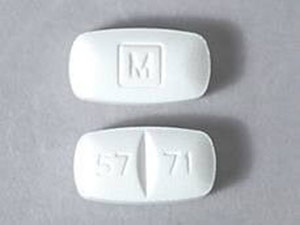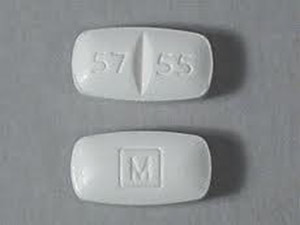Buy Methadone Online
Showing all 2 results
What is Methadone?
Methadone is an opioid prescription drug, which makes it a controlled substance. It means that the medicine may cause dependence and has a risk of misuse. The oral tablet of this drug manages moderate to severe pain. Methadone comes as an oral dispersible tablet (for dissolving in liquid), oral tablet, oral solution, and oral concentrate solution. It also comes in intravenous (IV) form, and only a healthcare provider can give it to you. Methadone also helps manage drug addiction. If you have another opioid addiction, your doctor may recommend you take Methadone to prevent you from having severe withdrawal symptoms. You can easily buy Methadone online or from a local pharmacy store.
Important Information
Methadone can make you drowsy. You should not drive any vehicle or use any heavy machinery, or do any activity that requires alertness until you know the effect of this medicine on you. You should avoid using Methadone if you are allergic to it, or if you have:
- A blockage in your intestines or stomach;
- Asthma (severe) or breathing problems
What to know before taking Methadone?
Before taking it, you must know that you should never share opioid drugs with someone else, especially someone with a past of drug abuse or addiction. Misuse of this drug can cause addiction, overdose, or death. It is against the law to sell or give away this opioid drug. Do not suddenly stop taking this medicine. Before taking the dose, talk to your doctor. Older adults, malnourished or debilitated, are more likely to have severe side effects. In addition, using opioid medicine for the longer term may affect the ability to have children (fertility) in men or women. However, it is still a question whether opioid effects on fertility are temporary or permanent. Avoid breastfeeding because Methadone can pass into the breast milk and cause breathing problems, drowsiness, or death in a nursing baby. If you are using an opioid medicine during pregnancy, your baby could become drug-dependent. It can cause life-threatening withdrawal symptoms in the newborn baby. An opioid-dependent baby may need treatment for several weeks.
How to take Methadone?
Follow precisely your health advisor’s prescription. Follow all the prescription labels, medication guides, and instructions. Never use Methadone in smaller or copious amounts than prescribed. If you are feeling an increased desire to use this medicine, then inform your doctor. Take Methadone (oral) by mouth. Injection of Methadone (injection) is under the skin or into a muscle or infused into the vein. Your healthcare provider will teach you to use this injection by yourself. Carefully measure liquid medicine. Use a dosing syringe or medicine dose-measuring device. Dissolve the dispersible tablet in orange juice, water, or other citrus-flavored (non-alcoholic) beverage. Never use Methadone liquid or tablets to make a mixture for injection into your vein. It may result in death with the use of prescription drugs. When your doctor gives you Methadone under a treatment program for drug addiction or detoxification, the doctor may recommend taking the dose by a family member or other caregiver. Store Methadone away from heat and moisture at room temperature. Keep track of your drug. Be aware of misusing it or taking it without a prescription because Methadone is a drug of abuse.
Methadone dosage
Your dosage will depend upon your age, medical condition, response to the initial phase of treatment, other medications you take, and other medical conditions you have. Usual adult dosage for short-term moderate to severe pain:
- Initial dose- 2.5 mg within every 8 to 12 hours
- Maintenance dose- your doctor will gradually increase your dosage every 3 to 5 days or more
Usual adult dosage for detoxification of opioid addiction:
- Typical initial dose- 20 mg to 30 mg
- Maintenance amount- after waiting for 2 to 4 hours, your doctor may give you an extra dose of 5 mg to 10 mg.
- Typical quantity- for short-term detoxification, your doctor may recommend taking 20 mg twice per day for two to three days.
- Maximum amount- on the first day, you should avoid taking more than 40 mg total.
Overdose
In case of overdose, take medical help or call the Poison helpline at 1-800-222-1222. A Methadone overdose can be fatal. Overdose symptoms may include cold and clammy skin, severe drowsiness, muscle weakness, slow heart rate, prolonged breathing, or coma.
What to avoid while using Methadone?
Avoid alcohol consumption because it causes dangerous side effects, and death could occur. Likewise, the interaction of grapefruit with Methadone can lead to unwanted side effects. Therefore, avoid using grapefruit products while taking this medicine. Avoid operating any machinery or driving vehicles until you know how this medicine will affect you. Dizziness or drowsiness (severe) can cause accidental falls or severe injuries.
Methadone side effects
Methadone may cause mild or severe side effects. More common side effects of Methadone may include:
- Constipation;
- Nausea;
- Vomiting;
- Sleepiness;
- Headache;
- Tiredness;
- Dizziness; or
- Stomach pain
These side effects of Methadone may disappear after a while of taking Methadone. If they persist or worsen with time, inform your medical healthcare provider immediately. Immediately take medical help if you have severe side effects. Call 911 if your symptoms are life-threatening or you think you have a medical emergency. Severe side effects to Methadone may include:
- Failure of the respiratory system including chest pain, shortness of breath, feeling faint, lightheadedness, dizziness, shallow breathing, seizures, confusion, little chest movement with breathing;
- Orthostatic hypotension including low blood pressure, fainting, dizziness, or lightheadedness;
- Physical dependence and life-threatening withdrawal symptoms when you stop taking the drug causing restlessness, trouble sleeping, irritability or anxiousness, rapid breathing rate, increased blood pressure, fast heart rate, teary eyes, dilated pupil, yawning, runny nose, diarrhea and stomach cramps, vomiting, nausea, loss of appetite, chills, sweating, muscle aches, and back pain;
- Abuse, misuse, or addiction. Symptoms may include:
- Taking the drug even if you don’t need it regularly
- Taking more of the drug than recommended
- Ignoring regular duties
- Continuing to take the medication despite adverse outcomes with family, friends, your job, or the law
- Lying about how much drug you are taking or using the medicine secretly
What drugs can interact with Methadone?
Various drugs may interact with Methadone and cause withdrawal symptoms or breathing problems. Tell your medical healthcare provider if you also use any medicine to treat HIV or hepatitis C, an antibiotic, antifungal medication, seizure medications, or heart or blood pressure medicines.


